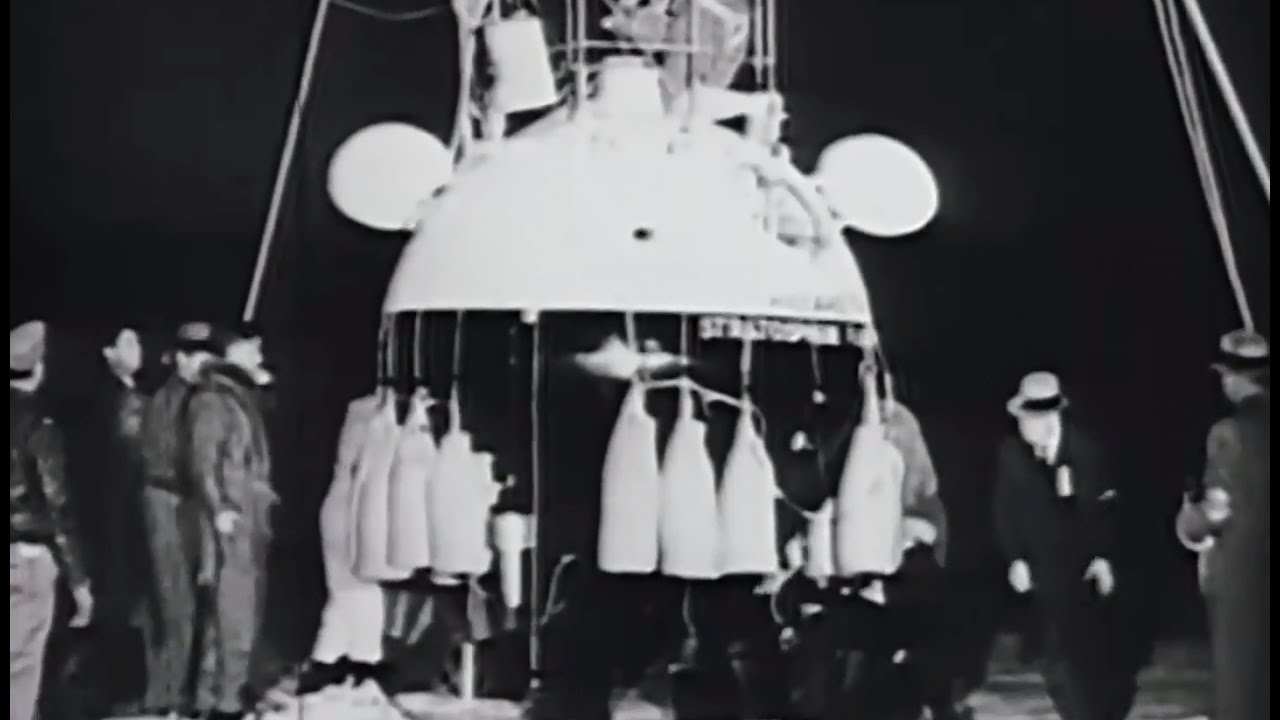Balloons, Blimps, Airships, Dirigibles, LTA… playlist:
more at
After a historical overview of balloon flying, the work of Jean Piccard is described by his wife Jeanette, including the development and testing of environmental control systems which were later applied to modern spacecraft development.
Public domain film from the US National Archives, slightly cropped to remove uneven edges, with the aspect ratio corrected, and one-pass brightness-contrast-color correction & mild video noise reduction applied.
The soundtrack was also processed with volume normalization, noise reduction, clipping reduction, and/or equalization (the resulting sound, though not perfect, is far less noisy than the original).
Jean Felix Piccard (Basel, Switzerland, January 28, 1884 — January 28, 1963, Minneapolis, Minnesota), also known as Jean Piccard, was a Swiss-born American chemist, engineer, professor and high-altitude balloonist. He invented clustered high-altitude balloons, and with his wife Jeannette, the plastic balloon. Piccard’s inventions and co-inventions are used in balloon flight, aircraft and spacecraft. Captain Jean-Luc Picard of Star Trek is named for one or both of him and his twin brother Auguste – in fact, it was sometimes hinted that the character may be descended from the scientist…
Stratosphere flight
Piccard was the co-pilot for his wife Jeannette on the third and final voyage of the Century of Progress. The largest balloon in the world was conceived for him to fly at the World’s Fair in 1933 but was flown there by US Navy pilots who were licensed. After this flight he created the liquid oxygen converter when the liquid failed to vaporize on descent after the cabin doors were open. Piccard developed a frost-free window, that was used on this flight and later by the Navy and Air Force in the B-24 Liberator or B-26 Marauder. He used blasting caps and TNT for releasing the balloon at launch and for remote release of external ballast from inside the sealed cabin. This was the first use of pyrotechnics for remote-controlled actuating devices in aircraft, an unpopular, revolutionary idea at the time. Later his student Robert R. Gilruth, who became the director of the NASA Manned Spacecraft Center, approved and used them in spacecraft…
Plastic balloons
In 1935 and 1936, to reduce weight and thus enabling a balloon to reach higher altitudes, plastic balloon construction began independently by Max Cosyns in Belgium, Erich Regener in Germany, and Thomas H. Johnson and Jean Piccard, then at the Franklin Institute Bartol Research Foundation in Swarthmore, Pennsylvania. Johnson suggested cellophane to Jean Piccard.
Piccard with his wife co-invented the plastic balloon and he designed and in 1936 flew a cellophane balloon built by his students. The balloon was unmanned, 25 feet wide, and made of tapered 33-foot gores and one-inch 3M Scotch transparent tape. Jean Barnhill, Harold Larson and Lloyd Schumacher cut the gores that fit together like an “orange peel.” Harold Hatlestad built the radio equipment and Robert Silliman built the telemeter that sent temperature and pressure data back. Robert Hatch and Silliman maintained radio contact from a station on the roof of the university armory until the radio’s battery froze from insufficient insulation. The balloon floated at 50,000 feet, and in ten hours traveled over 600 miles to near Huntsville, Arkansas.
Cluster balloons
Developed with John Ackerman of the University of Minnesota and piloted by Jean Piccard in 1937 in Rochester, Minnesota, the first multi-celled balloon was called The Pleiades and was made of 98 latex rubber balloons. In a letter to Robert Gray of the Dewey and Almy Chemical Co. later published in Time magazine, Piccard describes how he broke balloons with a hunting knife and revolver to control his descent. A TNT charge released the cluster as he expected but sent burning excelsior down that destroyed the first Pleiades. He suggested to Gray that rock wool in place of excelsior would prevent similar accidents in the future.
Balloon research stopped for the most part during World War II.
In February 1946 with Otto C. Winzen, Jean Piccard proposed manned flight to the US Navy using clustered balloons made of thin plastic. In June the Office of Naval Research approved Project Helios and that year General Mills and the University of Minnesota contracted to build a cluster of 100 polyethylene balloons for atmospheric research. Helios was designed to reach 100,000 feet for ten hours with a payload of instruments.
Jean Piccard helped Winzen design the Skyhook polyethylene balloons that replaced Project Helios in 1947…
Piccard died on January 28, 1963 (his 79th birthday) in Minneapolis.

